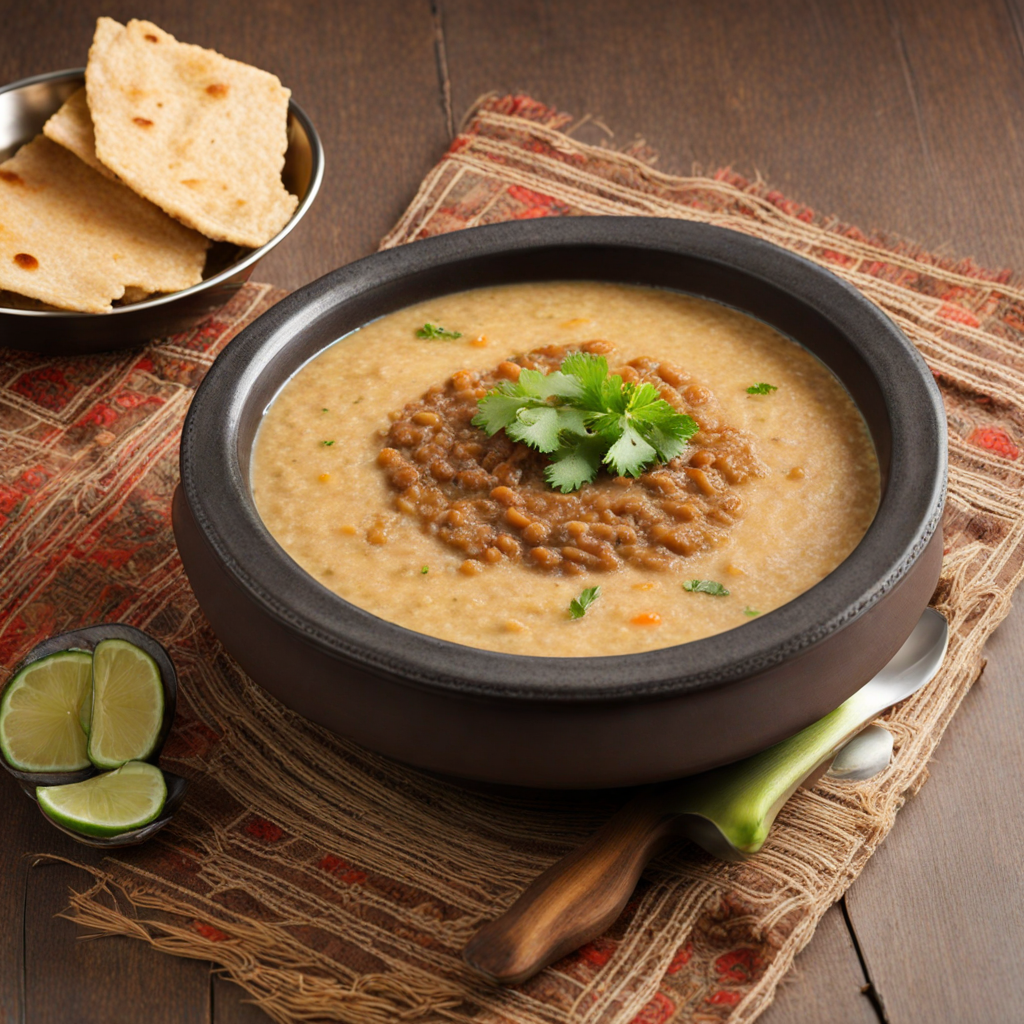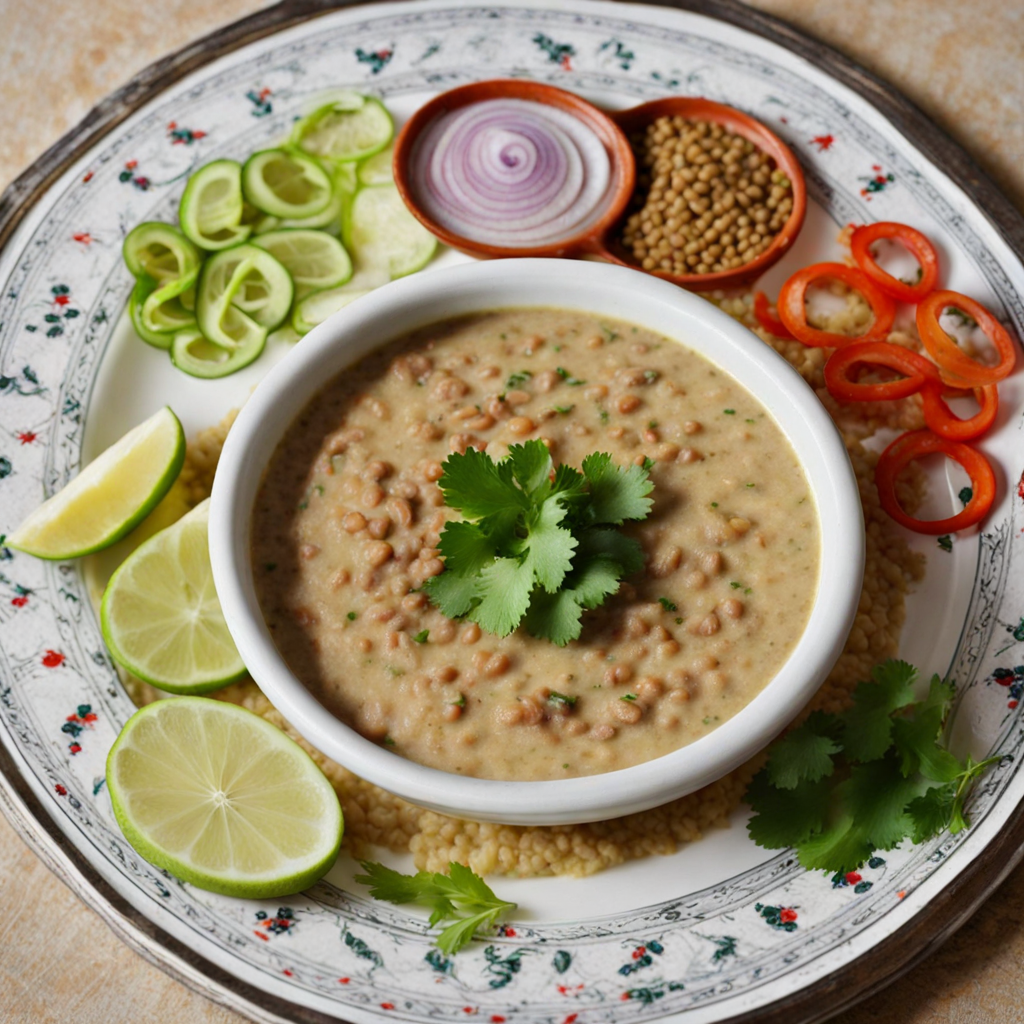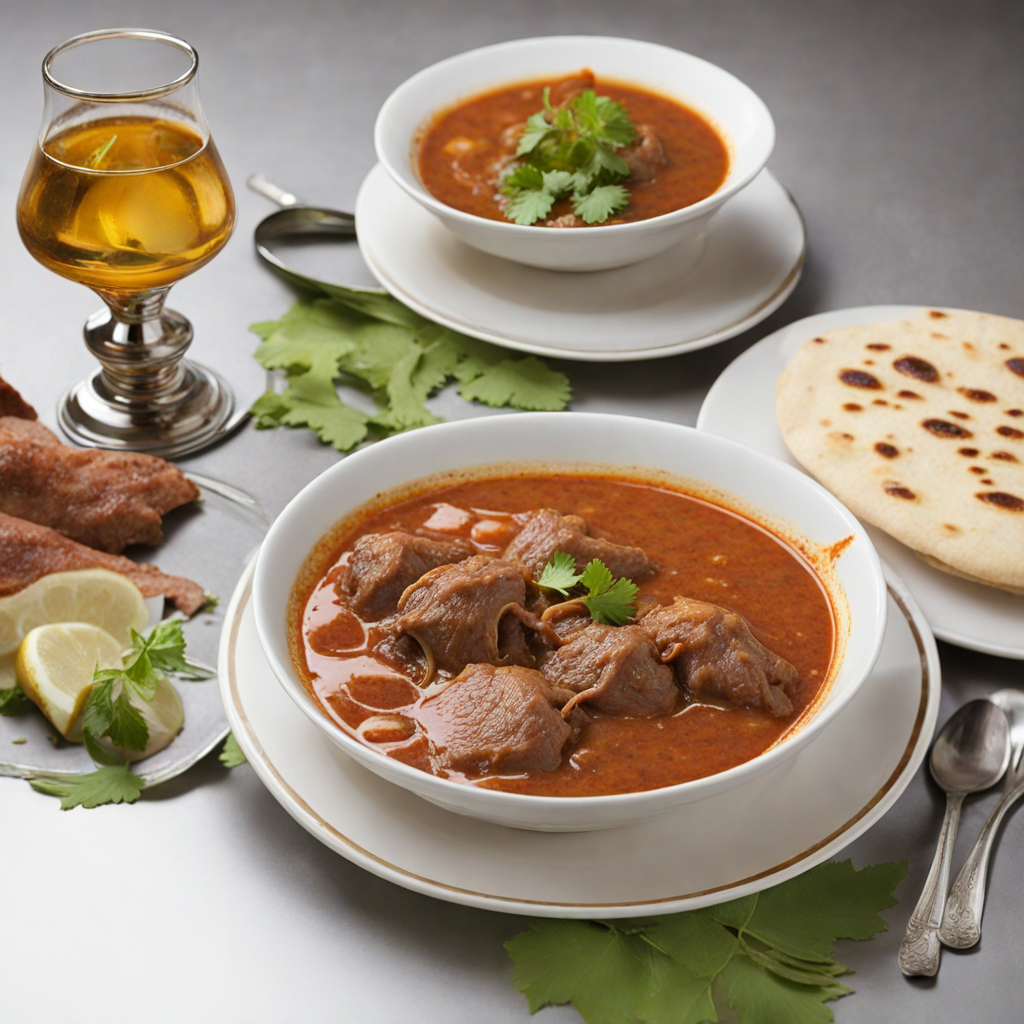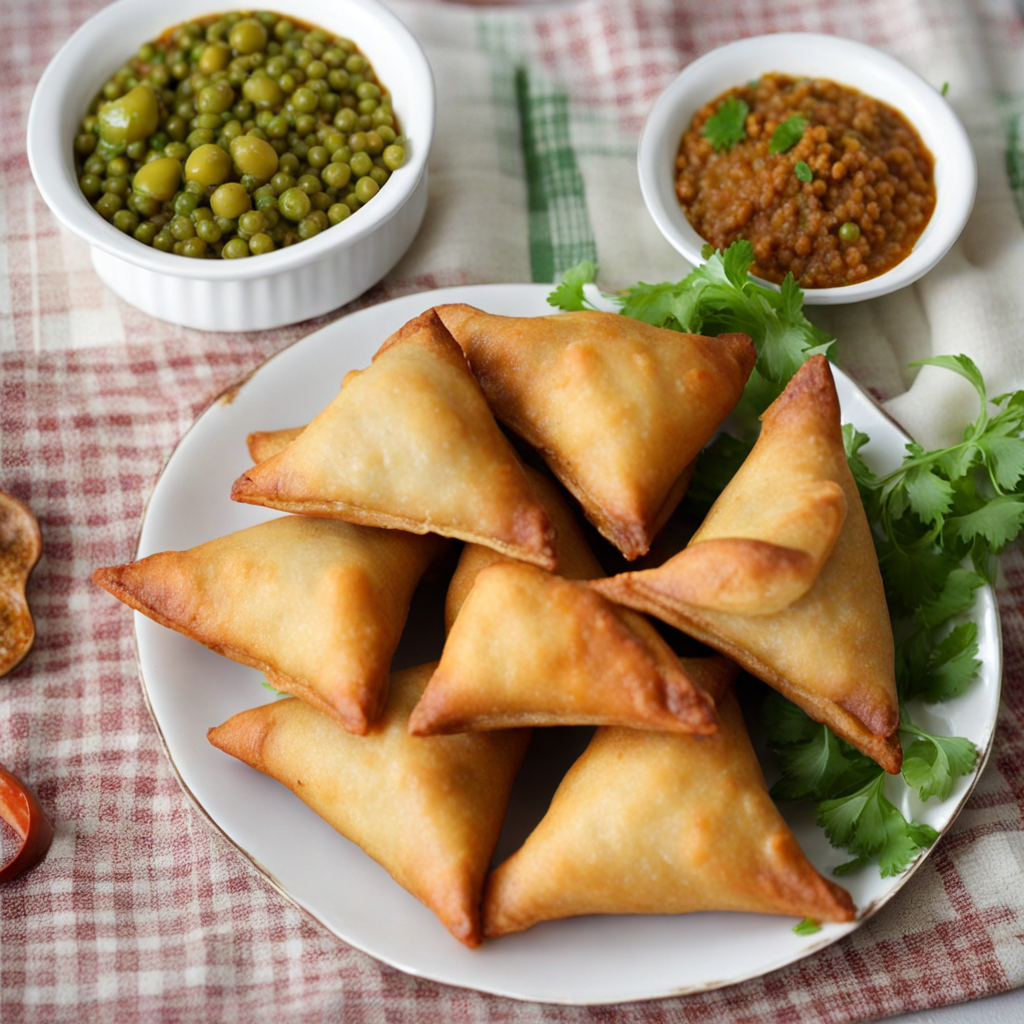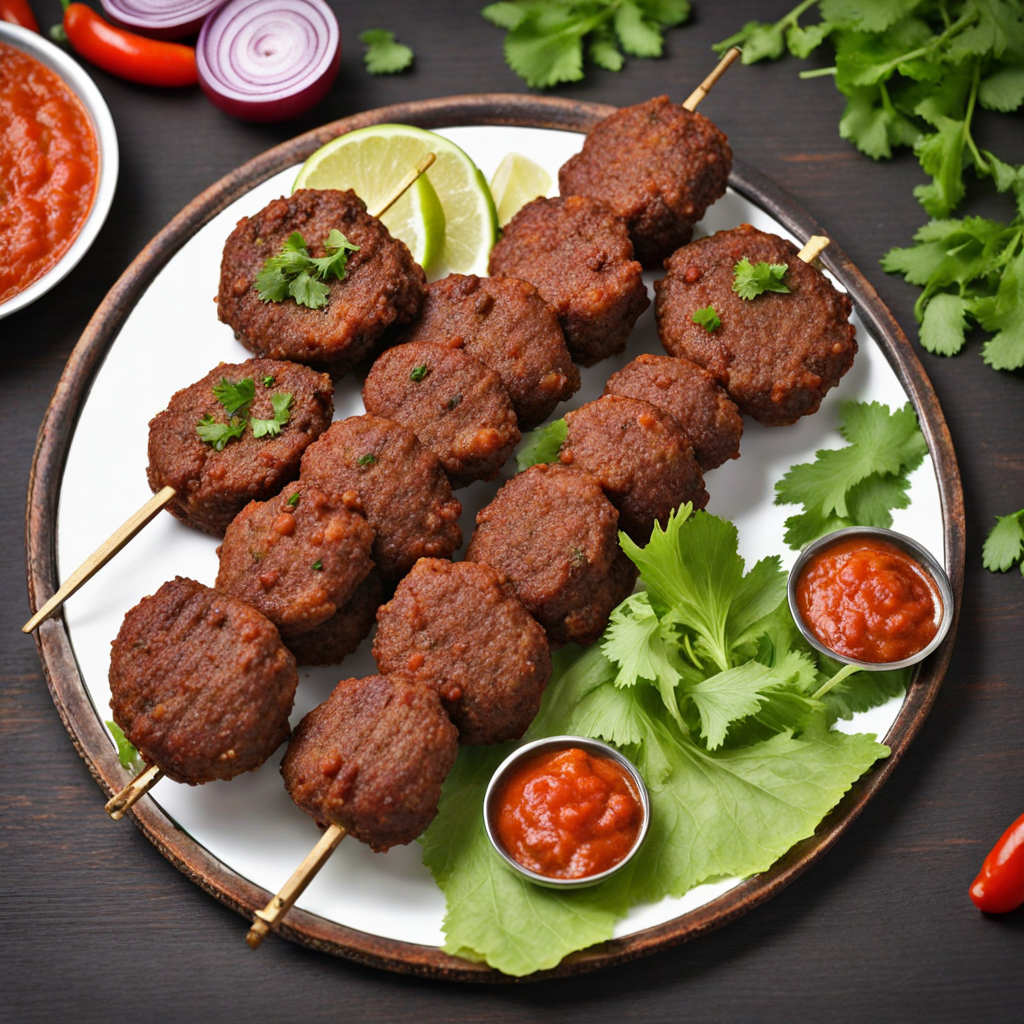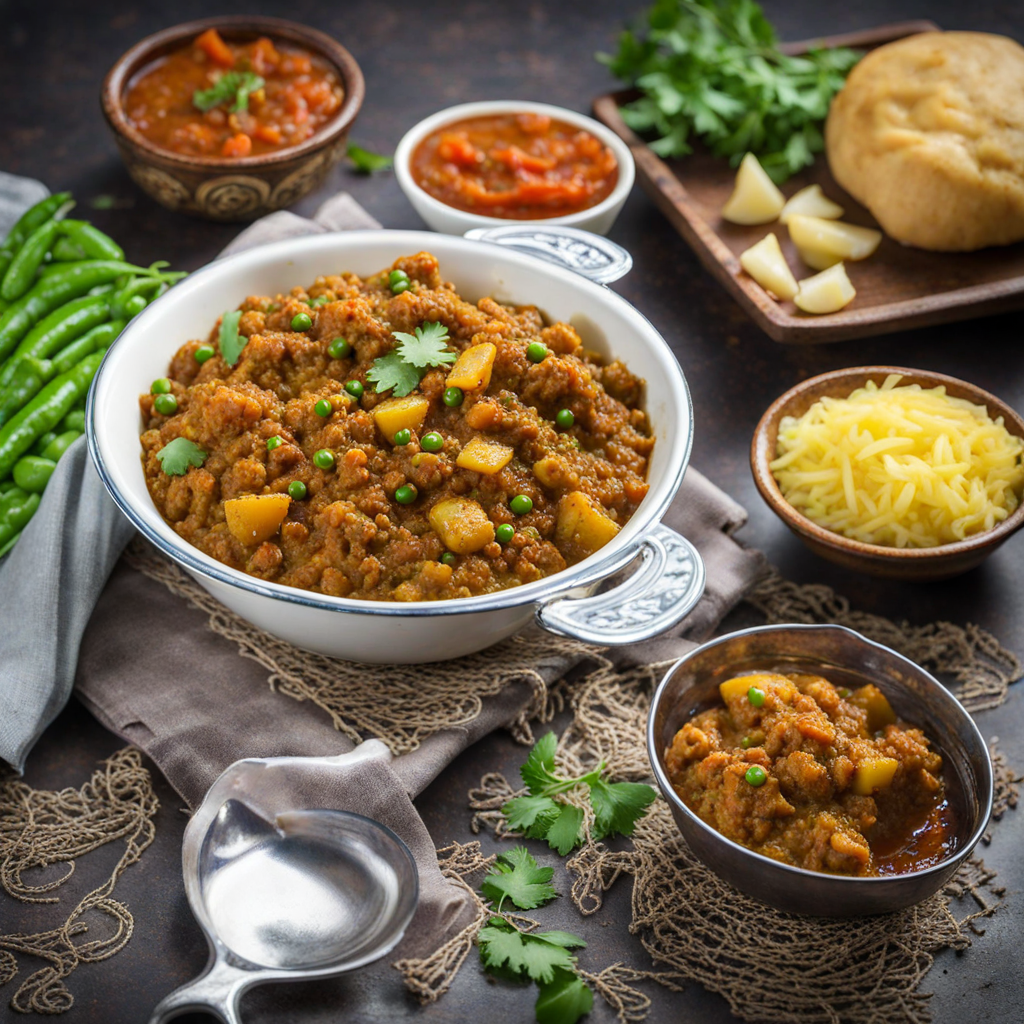Haleem
Haleem is a rich, savory dish that showcases the culinary heritage of Pakistan, blending flavors and textures into a harmonious experience. This slow-cooked stew is primarily made from a mix of wheat, barley, lentils, and meat—typically chicken, beef, or lamb. The ingredients are cooked for several hours, often overnight, allowing the flavors to meld and the grains to break down into a creamy, porridge-like consistency. The result is a hearty and comforting dish that is both nutritious and satisfying, perfect for sharing during festive occasions or family gatherings. What sets Haleem apart is its unique blend of spices, which can include cumin, coriander, garam masala, and a hint of turmeric. These spices infuse the dish with a warm, aromatic profile that tantalizes the taste buds. The final touch is often a drizzle of fried onions, fresh cilantro, and a squeeze of lemon, adding freshness and a delightful crunch. Each bowl of Haleem is a labor of love, reflecting the patience and skill involved in its preparation, which can vary by region and family tradition. Served with naan or crusty bread, Haleem transcends a mere meal; it is a celebration of community and culture. The dish is often enjoyed during the holy month of Ramadan, breaking fast with its nourishing elements. As you take your first spoonful, you’ll be enveloped in the warmth of spices and the richness of the stew, making it a dish that is not just about flavor but also about the stories and traditions it carries. For anyone looking to explore new tastes and cuisines, Haleem offers a delightful entry point into the world of Pakistani food.
How It Became This Dish
The History of حلیم (Haleem): A Culinary Journey Through Time Haleem, a rich and hearty dish, has woven itself into the cultural fabric of Pakistan, reflecting the nation's history, traditions, and culinary ingenuity. Its origins, cultural significance, and evolution over time offer a fascinating glimpse into the intertwined narratives of food and identity in the subcontinent. #### Origins: A Journey Through Time The roots of Haleem can be traced back to ancient times, with its earliest forms believed to have originated in the Middle East. The dish is thought to have been influenced by the ancient Greeks, who prepared a similar dish known as "Halim." This dish was made using wheat, lentils, and meat, which were slow-cooked to create a thick, porridge-like consistency. The Persian influence is significant here, as the word "Haleem" itself is derived from the Arabic word "Halim," meaning "patient" or "forbearing," reflecting the long cooking process required to achieve its distinctive texture and flavor. As trade routes expanded and cultures intermingled, Haleem made its way to the Indian subcontinent, particularly during the medieval period. The Mughal Empire, known for its opulent cuisine, played a crucial role in popularizing Haleem throughout the region. The Mughals brought a wealth of culinary techniques and ingredients, leading to the adaptation of Haleem into various regional styles. In India, it became a staple during the month of Ramadan, a time when Muslims fast from dawn until sunset, and the dish was often served at iftar (the evening meal to break the fast). #### Cultural Significance Haleem is more than just a dish; it embodies the spirit of community, hospitality, and celebration. In Pakistan, it is deeply entrenched in the cultural practices of its people. The preparation of Haleem is often a communal affair, especially during religious festivals such as Eid al-Fitr and Eid al-Adha. Families and friends come together to share in the cooking process, with each person contributing their skills and ingredients, transforming the act of cooking into a bonding experience. In addition to its role in festive occasions, Haleem has become a symbol of resilience and strength for the people of Pakistan. Its presence during difficult times—such as natural disasters or socio-political upheaval—serves as a reminder of community support and solidarity. The dish is often prepared and distributed to those in need, showcasing the generosity and compassion inherent in Pakistani culture. #### Development Over Time While Haleem has maintained its core ingredients—wheat, barley, lentils, and meat (commonly beef or chicken)—its preparation has evolved over the centuries, leading to regional variations that reflect local tastes and culinary practices. In Pakistan, the most popular version is the Karachi-style Haleem, known for its robust flavors and creamy texture, achieved through the meticulous blending of spices and slow cooking. Karachi, a bustling metropolis and cultural melting pot, has become the epicenter of Haleem preparation. Street vendors and specialized eateries, known as "Haleem houses," have proliferated, each boasting their unique recipes and methods. The popularity of Haleem in Karachi can be attributed to its accessibility and comforting nature, making it a go-to dish for people from all walks of life. In recent years, the rise of social media and culinary shows has brought Haleem into the spotlight, leading to a newfound appreciation for its traditional preparation. Chefs and home cooks alike have begun to experiment with modern twists, incorporating new ingredients and presentation styles while still honoring the dish's heritage. This evolution has attracted younger generations, ensuring that the legacy of Haleem continues to thrive. #### Ingredients and Preparation The preparation of Haleem is an art form that requires patience and dedication. The dish begins with the soaking of wheat and lentils, which are then ground into a coarse paste. Meat, typically beef or chicken, is cooked separately with an array of spices, including cumin, coriander, and garam masala, which impart depth and warmth to the dish. The meat is then combined with the grain mixture, and the entire concoction is slow-cooked for several hours, often overnight, to allow the flavors to meld and develop. Traditionally, Haleem is stirred continuously, a process known as "dastak," which adds to its creamy texture. This technique is labor-intensive but crucial for achieving the desired consistency. Once cooked, Haleem is garnished with fried onions, fresh coriander, mint, and a squeeze of lemon, creating a symphony of flavors and colors that entice the senses. #### Haleem Today: A Global Phenomenon In the contemporary culinary landscape, Haleem has transcended its origins and established itself as a beloved dish not only in Pakistan but also among the global diaspora. Pakistani communities around the world have embraced Haleem, serving it at cultural events, weddings, and gatherings. Restaurants specializing in South Asian cuisine often feature Haleem on their menus, introducing it to a broader audience. Haleem's adaptability has led to its incorporation into fusion cuisine, where chefs experiment with flavors and ingredients from different culinary traditions. For example, some have begun to incorporate elements of Mexican or Mediterranean cuisine, creating unique variations that still pay homage to the original dish. #### Conclusion: A Dish of Heritage and Heart Haleem represents the rich tapestry of Pakistani culture, encapsulating history, tradition, and communal spirit within its warm embrace. Its journey from ancient origins to the bustling streets of Karachi is a testament to the power of food to connect people across generations and geographies. As Haleem continues to evolve, it remains a cherished dish that nourishes not just the body, but also the soul, serving as a reminder of the strength and resilience of communities that share in its preparation and enjoyment. In a world increasingly defined by globalization, Haleem stands as a delicious testament to the importance of preserving culinary heritage, ensuring that the flavors of the past continue to resonate in the kitchens and hearts of future generations.
You may like
Discover local flavors from Pakistan


